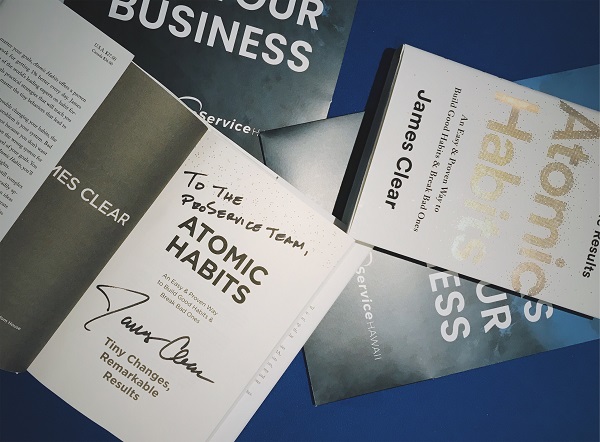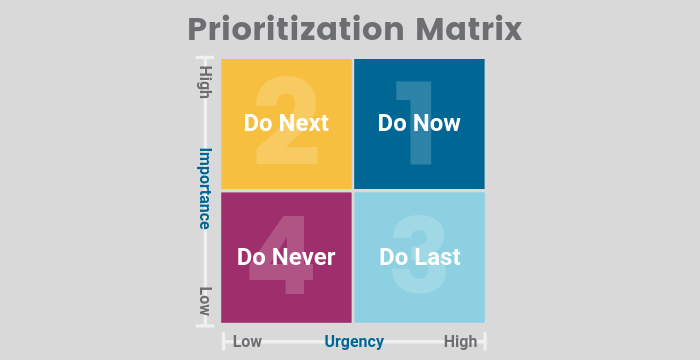4 Laws of Habit Change: Advice From Our February Growth Series
Our first Growth Series event of 2019, “Atomic Habits: Compound Tiny Changes Into Remarkable Results,” took place on February 27 and featured James Clear, New York Times bestselling author, as our keynote speaker. We were honored to have him share his insight with our attendees.
Clear is an American author and entrepreneur as well as one of the world's leading experts on habit formation. He is the creator of The Habits Academy, the premier training platform for individuals and organizations that are interested in building better habits in life and work, and his most recent book, Atomic Habits, offers a proven framework for getting 1% better every day.
During his keynote, Clear shared personal stories and interesting anecdotes with Hawaii’s business community to show how we can create better habits, make better decisions, and live better lives.
If you couldn’t attend our Growth Series event last month, you’re in luck — we’re recapping Clear’s four laws that can help us understand what a habit is, how it works, and how to improve it.
Good or bad, habits can work for you or against you. Over the course of a typical day, a bad habit may seem miniscule –like filing away an unread email that you promise yourself you’ll come back to at the end of the day, and then forgetting about. Another 365 days of of not responding to emails will quickly go from no big deal to a very big deal, and could potentially end with a very irritated – and ignored – customer. On the flipside, good habits can also lead to positive changes if they are consistently occurring.
So why are bad habits so hard to quit? Bad habits repeat themselves not because you don’t want to change but because you have the wrong system for change.
According to the atomic habits laws, the system of building a habit – good or bad – can be divided into four simple steps: make it obvious, make it attractive, make it easy, and make it satisfying. Now let's dive into each law.
A cue triggers our brains to initiate a specific behavior. Basically, it’s information that predicts a reward. For example, if we see an advertisement promising more efficient advertising software, our brain is triggered by this cue to look into the product. Understanding cues helps us see our habits clearly, as well as identify obvious cues for triggers we want to change.
Seeing patterns in our lifestyles can also lead to easily making small shifts or adding habits where they are the most obvious. For example, if you make coffee the second you wake up every morning and a new habit you want to implement is to start meditating more, you can associate making coffee with meditating. Flip your coffee machine on, and meditate for five minutes before pouring yourself a mug of coffee.
One of the best ways to build a new habit is to identify a current habit you already do each day and then stack your new behavior on top. This is called habit stacking. Habit stacking is a special form of an implementation intention. Rather than pairing your new habit with a particular time and location, you pair it with a current habit or an entrypoint.
Cravings are the key to the second law of the habit loop, and they are the motivational force behind every habit. As Clear notes, without some level of motivation or desire – without wanting a change – we have no real reason to act.
One of the keys to making habits attractive is to design your environment based on the changes you want to make. For example, if you want to make a habit of networking with your peers more, place event reminders on your calendar, so you receive the notification before leaving work each day. The key is to make your environment a positive force for change.
Law #3: Make it easy
There’s a reason New Year’s Resolutions are given up by the second week of the year – making drastic lifestyle changes are hard to keep up with. Instead, opt for easy, marginal changes that you can continue day after day until it becomes a habit.
There are a few key moments in your day that can determine the trajectory of the rest of your day. And most of the changes that we want to make can be put into motion in just two minutes. Clear presented his “Two Minute Rule,” with the idea that “when you start a new habit, it should take less than two minutes to do.”
Clear states, “nearly any habit can be scaled down into a two-minute version.” For example, a goal to “engage more frequently with my customers” can be distilled down to “send one customer a thank you note” or “pick up the phone and call Rick from ProService to say hello.”
The idea is to make your habits as easy as possible to start. Once this is set in motion, chances are you’ll find yourself on the path to positive change.
If the ending is satisfying, we have a reason to repeat the behavior – so the “reward” is a very crucial part to creating good habits. Although for many long-term positive habits, change can take time to see. For example, if your goal is to cut business costs, after a week you might not see an increase in profitability, but you will by the end of the year.
Clear encourages us to create a visual trigger that can help motivate you to perform a habit with more consistency. For example, using a habit tracker can help keep us motivated by visually tracking progress. A habit tracker can come in the form of an app, a simple notebook, or moving paperclips from one pile to another.
Seeing progress is satisfying, and visual measures provide clear evidence of your progress. As a result, it can help reinforce your behavior and add little bit of immediate satisfaction to any activity.
We were so thrilled to welcome James Clear to the islands for our Growth Series event “Atomic Habits: Compound Tiny Changes Into Remarkable Results.” With his insightful tips, we are sure that you have the right tools to make tiny changes that add up to dramatic changes for you and your business. And if you missed the event, check out the video of the full event here.
As always, ProService is invested in your business's growth and success, so stay tuned for our next Growth Series event coming this spring!









